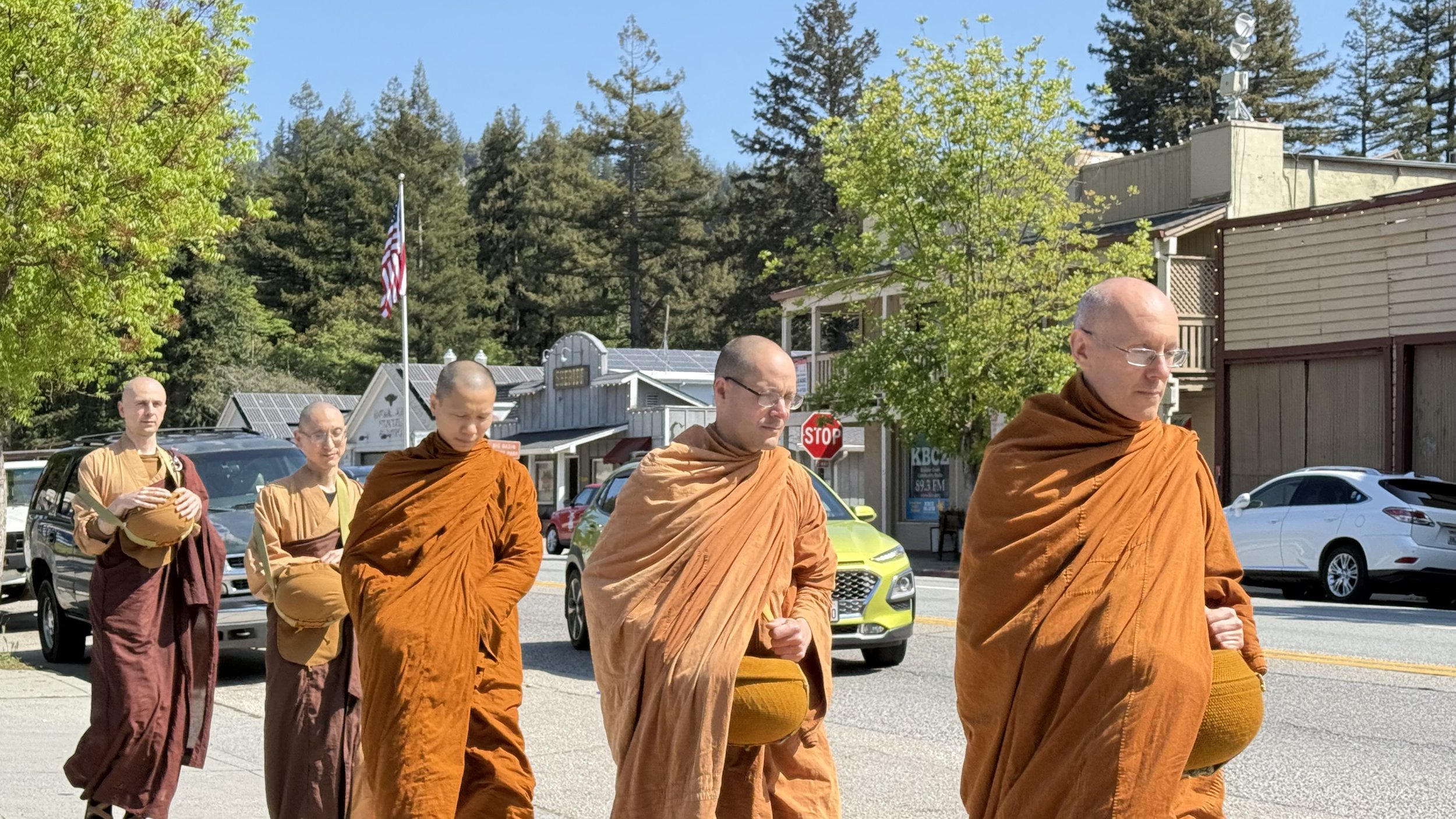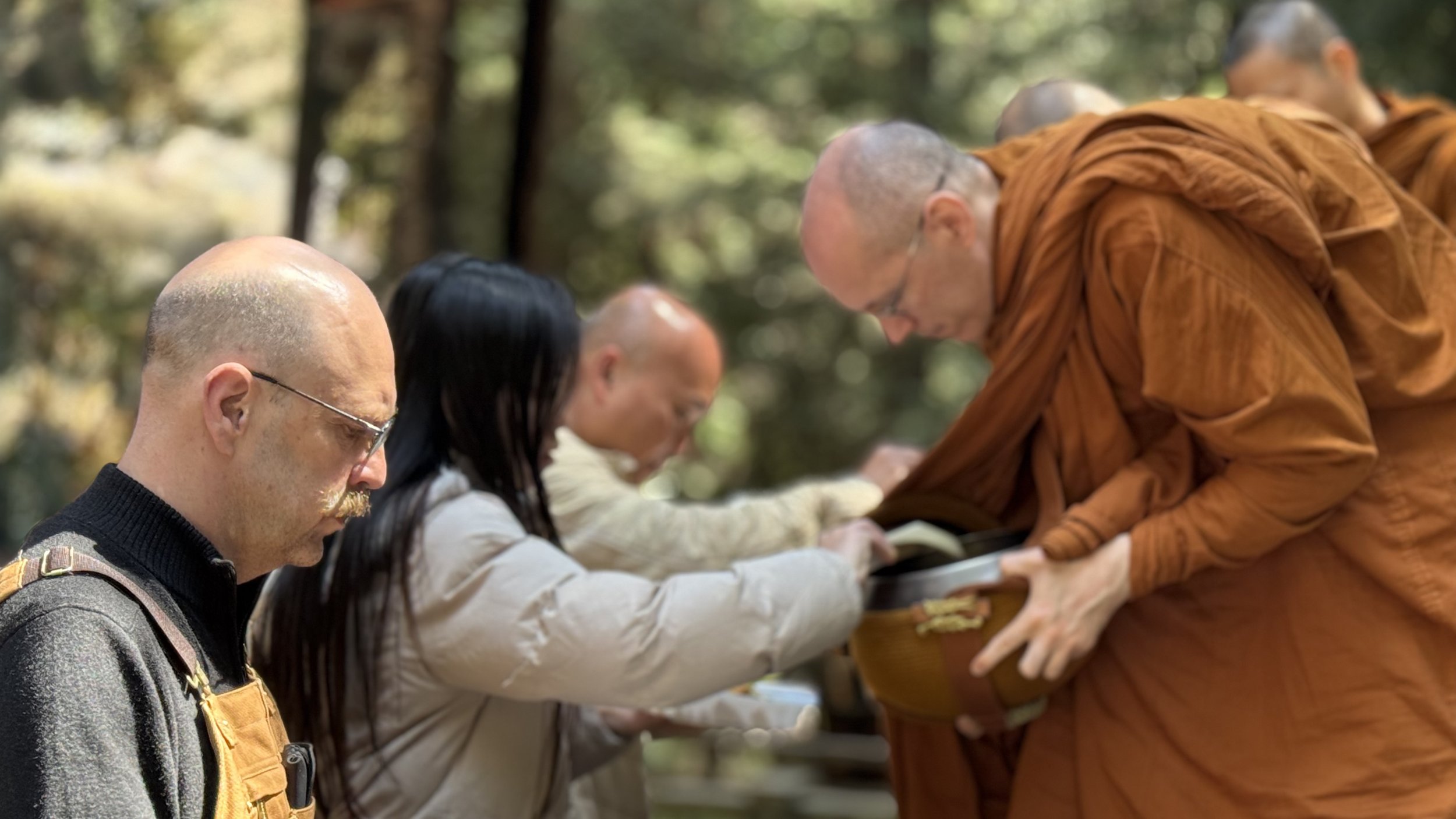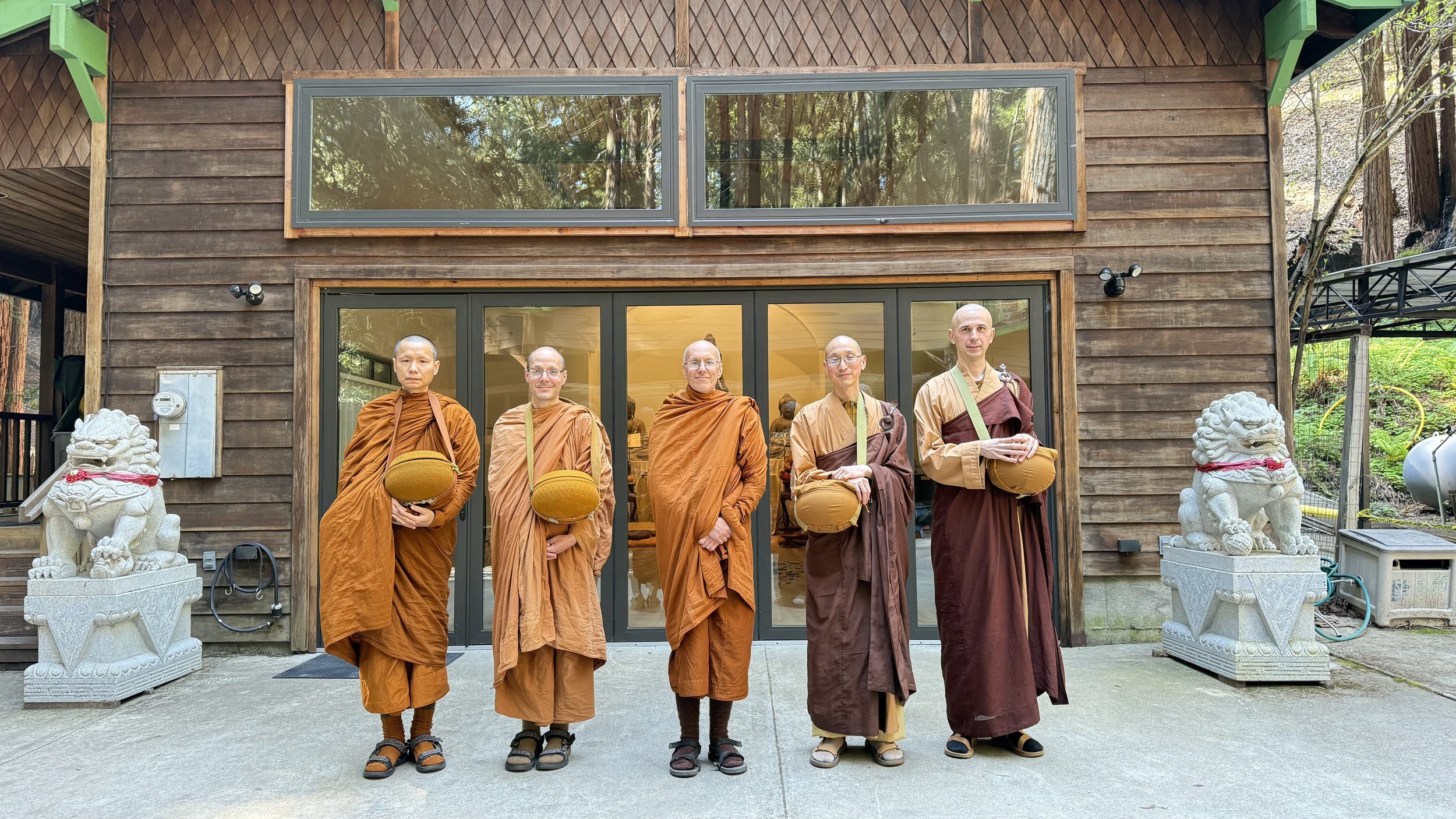Offering to the Buddha’s Body: Alms Round
by Will Liu, DRBU MA 2 student
I vividly remember standing on the main street of Boulder Creek waiting for the monks to come by on alms round. Then, from a distance, I saw them: monks, walking in dignified silence. They came from two lineages—three in the ochre robes of the Thai Forest lineage, two in the yellow robes and dark brown precept sashes of the Dharma Realm Buddhist Association. They held their alms bowls with reverence, walking in mindful procession, one step at a time. I had a reflection: This was a scene from the Buddha’s own time. The Buddha himself walked like this on alms round. This is how the Sangha sustained itself over the millennia. It became clear to me that when a monastic receives full ordination and dons the precept robes, they become living embodiments of Shakyamuni Buddha. Wherever they appear—in any country, in any setting—their presence carries the living pulse of the Buddha’s teachings.
In Theravāda Buddhist countries like Thailand, Sri Lanka, and Myanmar, the alms round is a daily ritual—a thread connecting monastics and laypeople in mutual care and support. But in China, where Mahāyāna Buddhism flourished, this practice of alms round faded over the centuries. In the West, where the Dharma is just beginning, it is almost unheard of. To witness such a scene in a small town in America was like personally touching the living pulse of Shakyamuni Buddha’s Dharma.
As each monk passed by, I placed a small scoop of food into their bowl. It was simple—rice, vegetables, tofu—but in that offering, I felt a profound opening. I wasn’t just giving lunch; I was making an offering to the Buddha’s body, the Sangha who were the embodiments of his teaching. From their outer robes and bowls to the inner training of body, speech, and mind, they carried the living transmission of the Buddha’s teachings—the Dharma-Vinaya. And something unexpected happened: my own heart was nourished too. Generosity opened the door to joy. Simplicity gave way to clarity. In their presence, content and serene, a path to freedom became visible.
This act of giving and receiving is deceptively simple. Yet it lifts all involved—monastics, laypeople, even curious passersby—out of the marketplace of transactions into a space of shared humanity. It is a moment of compassion and stillness in a world too often driven by greed and distraction. The alms round becomes a gateway—a living practice that connects us to something timeless and true, the scriptures comes to life.
Later, I learned that Master Hua said that DRBA monastics would one day go out on alms round in the West. That morning, I saw that vision for myself. Two great streams of Buddhism—Theravāda and Mahāyāna—walking together, not as separate traditions, but as one Sangha, converging in a small American town. It was a rare and wonderful moment.
And I had a joyful thought: perhaps Master Hua was there too watching with a smile the Dharma coming to the West, one step at a time.
From the left: Ajahn Kai, Ajahn Thitapañño, Ajahn Kaccāna, DM Jin Chuan, DM Jin Wei






